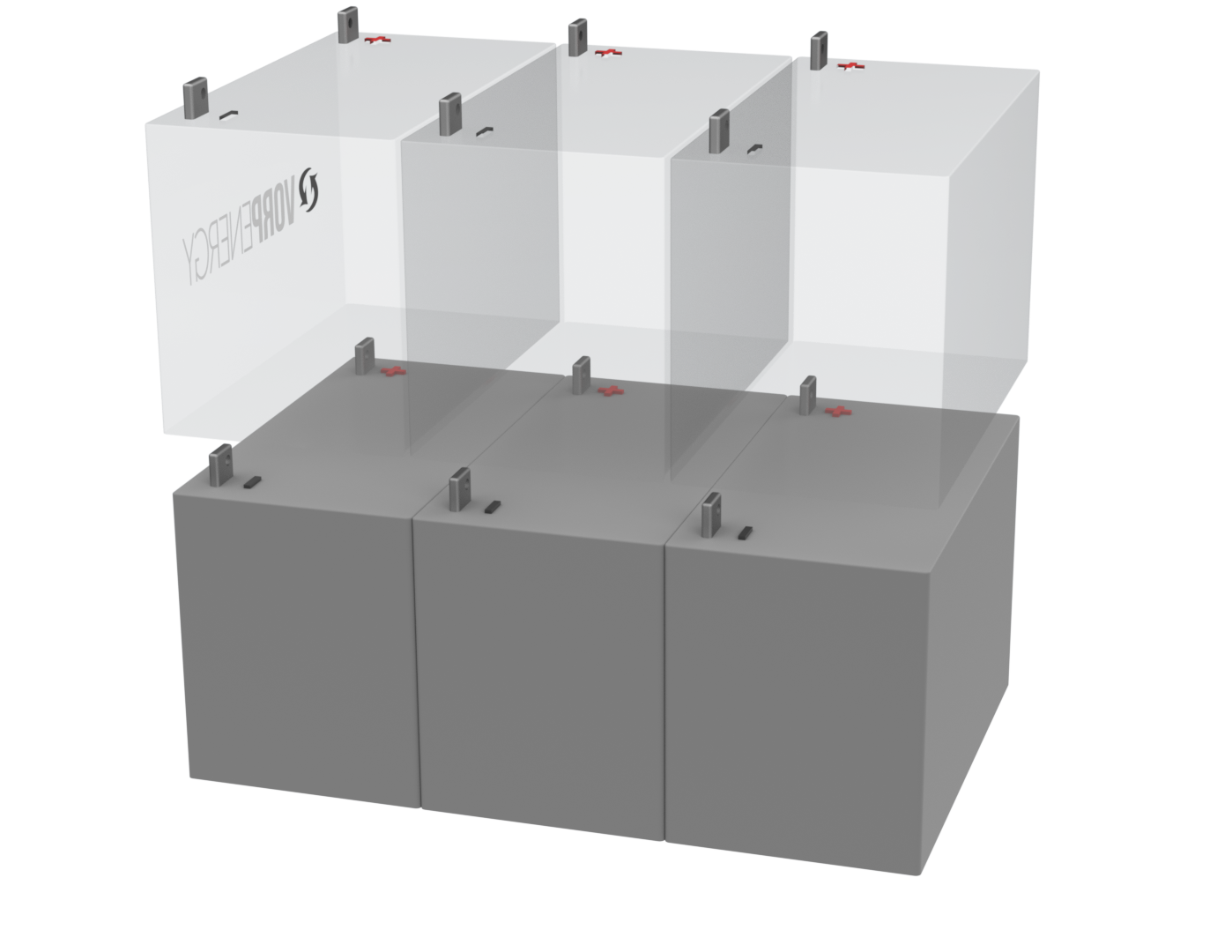What is the Difference between SLA (Sealed Lead Acid) and LiFePo4 (Lithium) Batteries? What works best? Why?
Battery storage is at the heart of any Outdoor UPS-Backup Kit or Remote Solar Surveillance Kit. All Vorp Energy Solution products are compatible with both Sealed Lead Acid (SLA) and Lithium Iron Phosphate (LiFePo4) energy storage. Understanding the differences between these types of batteries is important to designing any solar powered surveillance or communications systems. Keep reading as I compare SLA vs. Lithium batteries!
About Sealed Lead Acid Batteries (SLA)
Sealed Lead Acid SLA Batteries are sealed, zero maintenance batteries. They come in Absorbent Glass Mat (AGM), or Gel models. Either of these is appropriate for a Solar or UPS Backup application. Just be sure to use a Deep Cycle, rechargeable model.
The main advantages to using SLA Batteries are cost and availability. A 100Ah Sealed Lead Acid, AGM Battery (Typical of a small security / communications system) can be purchased for anywhere from $200 to $300. Because they are widely available, acquiring a battery locally can save on shipping cost (a 100Ah battery weighs around 65 lbs).
Battery Lifespan is determined by the number of charge/discharge cycles the battery will provide. The age old adage “You get what you pay for” certainly applies to battery storage. Most Sealed Lead Acid Batteries are designed to provide about two years of use, if cycled daily. Discharging a typical SLA battery beyond 50% of its maximum capacity will significantly reduce the number of charge cycles it provides. This means that a 100Ah Sealed Lead Acid Battery will provide 50 usable Amp hours. This is important to take into account when sizing your battery bank.
About Lithium Iron Phosphate Batteries (LiFePo4)
Lithium Iron Phosphate (LiFePo4) Batteries are also zero maintenance. There are many advantages to using LiFePo4 Batteries for Solar and UPS-Backup applications. These batteries are lightweight with a smaller footprint than Sealed Lead Acid Batteries. A typical 12 Volt, 100Ah LiFePo4 Battery weighs around 20 lbs, which is about 45 lbs lighter than a 100Ah SLA Battery.
Lithium Iron Phosphate Batteries also provide more usable energy than SLA Batteries. LiFePo4 Batteries can be discharged to 80% of their capacity without adversely affecting their overall lifespan. This means that a 100Ah LiFePo4 Battery will provide 80 usable Amp hours, as opposed to the 50 usable Amp hours provided by a 100Ah SLA Battery. This means that a 100Ah LiFePo4 Battery is equivalent to a 160 Amp hour Sealed Lead Acid Battery.
The primary benefit, however, of using Lithium Iron Phosphate Batteries for your Solar or UPS Battery Backup system, is the total number of cycles they provide.
LiFePo4 Batteries are designed to provide around 3,500 to 4,000 cycles, even at an 80% depth of discharge each cycle. That is 10+ years of use if cycled every single day! Vorp Energy mobile solar camera trailers work great with either battery, so its up to you to decide.
LiFePo4/Lithium Battery vs SLA Battery For Remote Power, Final Decision
Although the cost of a 100 Amp hour LiFePo4 Battery is considerably more than a 100 Amp hour SLA Battery, they are more cost effective in the long run, and provide a lower cost per Amp hour than Sealed Lead Acid Batteries.
If you’re installing batteries in a Solar or UPS-Backup solution for a customer, you’ll also need to take into account the cost of replacing an SLA Battery every 2-3 years, with labor costs and fuel on top of the cost of the new battery.
I hope you enjoyed reading about SLA vs. Lithium batteries. To learn more about remote surveillance solutions click a link below.
Remote Power/Surveillance Solutions:
- Solar surveillance trailers
- Solar surveillance skids
- Solar power camera kits
- Light pole power tap kits (VTAP)
- Outdoor UPS battery backups


Leave a Reply